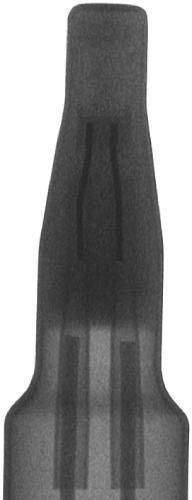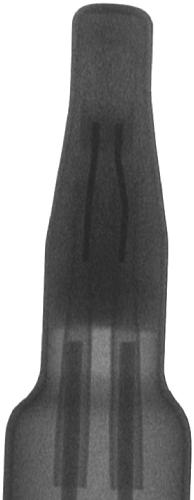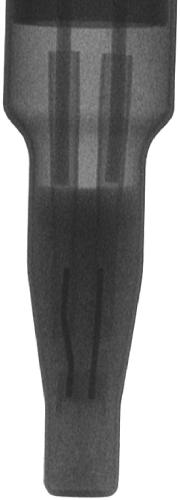Thermal conductive adhesive solidification method
A curing method and technology of thermally conductive adhesive, which is applied to the device for coating liquid on the surface, pretreatment of the surface, coating, etc., can solve the problem of thermally conductive adhesive cracks, air bubbles, reducing thermal conductivity, bonding strength and adhesion of thermally conductive adhesive, etc. problems, to achieve the effect of improving thermal conductivity
- Summary
- Abstract
- Description
- Claims
- Application Information
AI Technical Summary
Problems solved by technology
Method used
Image
Examples
Embodiment 1
[0032] The curing method of the thermally conductive adhesive includes the following steps:
[0033] A. Raise the ambient temperature of the automotive sensor with thermal adhesive to 180°C in 3 hours;
[0034] B. Next, maintain the ambient temperature of the automotive sensor with thermal adhesive at 180°C and keep it warm for 4 hours;
[0035] C. Next, raise the temperature of the environment where the product with thermal adhesive is used to 250°C;
[0036] D. Next, raise the temperature of the environment where the automotive sensor with heat-conducting adhesive is used to 800°C in 2.5 hours;
[0037] E. Next, maintain the ambient temperature of the automotive sensor with thermal adhesive at 800°C and keep it warm for 0.2 hours;
[0038] F. Next, lower the temperature of the environment where the automotive sensor with thermal adhesive is used to 150°C in 8 hours.
[0039] Observing the thermally conductive adhesive on the automotive sensor after curing in this embodime...
Embodiment 2
[0041] The curing method of the thermally conductive adhesive includes the following steps:
[0042] A. Raise the ambient temperature of the automotive sensor with thermal adhesive to 185°C in 2 hours;
[0043] B. Next, maintain the ambient temperature of the automotive sensor with thermal adhesive at 185°C and keep it warm for 3 hours;
[0044] C. Next, raise the ambient temperature of the automotive sensor with thermal adhesive to 255°C in 1.5 hours;
[0045] D. Next, raise the temperature of the environment where the automotive sensor with heat-conducting glue is used to 805°C in 2 hours;
[0046] E. Next, maintain the ambient temperature of the automotive sensor with thermal adhesive at 805°C and keep it warm for 0.1 hour;
[0047] F. Next, lower the temperature of the environment where the automotive sensor with heat-conducting glue is used to 155°C in 7 hours.
[0048] Observing the thermally conductive adhesive on the automotive sensor after curing in this embodiment...
Embodiment 3
[0050] The curing method of the thermally conductive adhesive includes the following steps:
[0051] A. Raise the ambient temperature of the automotive sensor with thermal adhesive to 175°C in 2.5 hours;
[0052] B. Next, maintain the ambient temperature of the automotive sensor with thermal adhesive at 175°C and keep it warm for 2 hours;
[0053] C. Next, raise the temperature of the environment where the automotive sensor with thermal adhesive is used to 245°C in 1 hour;
[0054] D. Next, raise the ambient temperature of the automotive sensor with thermal adhesive to 795°C in 1.5 hours;
[0055] E. Next, maintain the ambient temperature of the automotive sensor with thermal adhesive at 795°C and keep it warm for 0.2 hours;
[0056] F. Next, lower the ambient temperature of the automotive sensor with thermal adhesive to 145°C in 6 hours.
[0057] Observing the thermally conductive adhesive on the automotive sensor after curing in this embodiment, it is found that there are...
PUM
 Login to View More
Login to View More Abstract
Description
Claims
Application Information
 Login to View More
Login to View More - R&D
- Intellectual Property
- Life Sciences
- Materials
- Tech Scout
- Unparalleled Data Quality
- Higher Quality Content
- 60% Fewer Hallucinations
Browse by: Latest US Patents, China's latest patents, Technical Efficacy Thesaurus, Application Domain, Technology Topic, Popular Technical Reports.
© 2025 PatSnap. All rights reserved.Legal|Privacy policy|Modern Slavery Act Transparency Statement|Sitemap|About US| Contact US: help@patsnap.com



